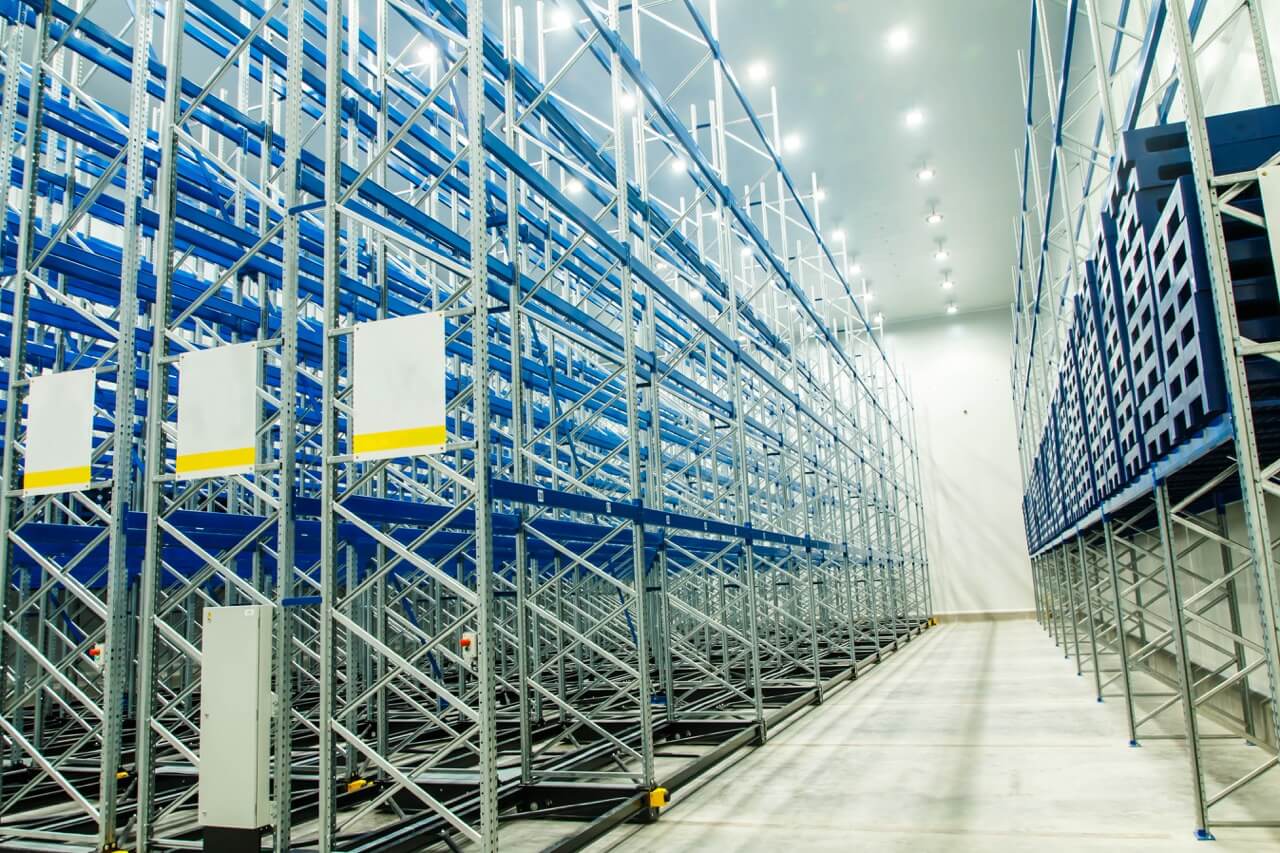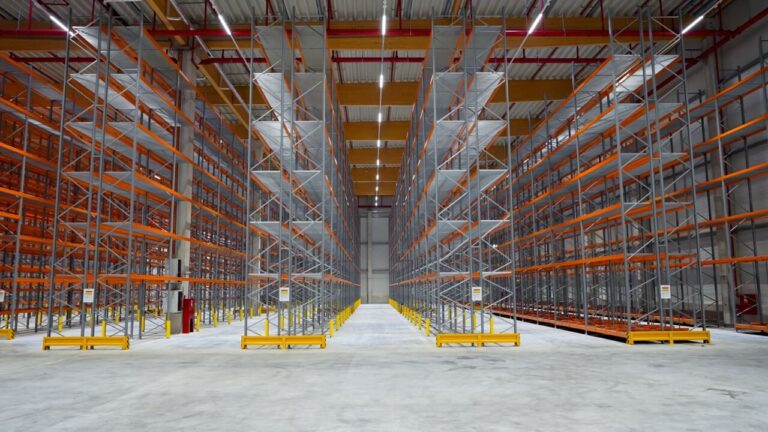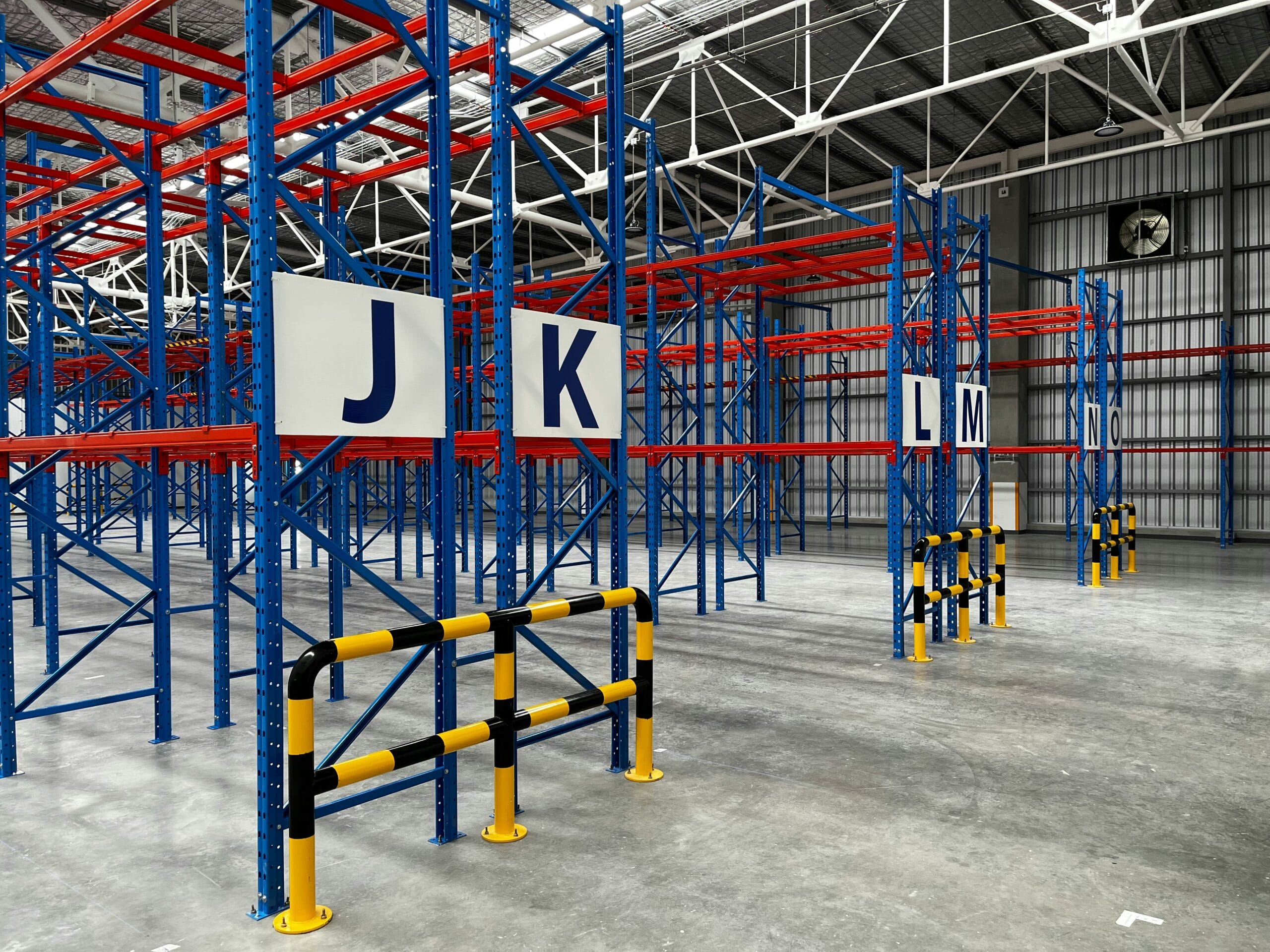Top Rack Mobile Shelving: Suppliers, Installation, and Maintenance
Top Rack Mobile Shelving: Suppliers, Installation, and Maintenance Dammam, Riyadh, jeddah
Introduction to Mobile Shelving Systems
Mobile shelving systems are a modern storage solution designed to maximize space efficiency and optimize storage capacity. Unlike traditional static shelving, mobile shelving systems are mounted on rails, allowing the shelves to be moved laterally. This design eliminates the need for fixed aisles, thereby significantly increasing the storage density within the same footprint.
The primary purpose of mobile shelving systems is to provide a flexible and high-density storage option that can adapt to various needs. One of the major advantages of these systems is their ability to maximize storage capacity by utilizing space that would otherwise be occupied by aisles. This is particularly beneficial in environments where space is at a premium, such as urban offices, medical facilities, and research libraries.
The versatility of mobile shelving systems makes them suitable for a wide range of applications across different industries. In libraries, mobile shelving can accommodate a large volume of books while allowing easy access for users. Healthcare facilities often use mobile shelving to organize medical records, supplies, and pharmaceuticals efficiently. Warehouses and distribution centers benefit from mobile shelving by optimizing inventory storage and improving retrieval times.
Furthermore, mobile shelving systems offer the advantage of customization. They can be tailored to meet specific storage needs, whether it’s for archival purposes, bulk storage, or secure storage for sensitive items. This adaptability ensures that mobile shelving can be integrated into various operational workflows, enhancing overall productivity and organization.
In summary, mobile shelving systems present a highly efficient and adaptable storage solution, providing significant benefits over traditional static shelving. By eliminating fixed aisles and maximizing storage capacity, these systems offer a versatile and practical option for diverse industries, from libraries and healthcare to warehousing and beyond.
Key Features of High-Quality Mobile Shelving
When selecting top rack mobile shelving systems, it is paramount to consider several key features that define their quality and efficiency. Firstly, material quality stands as a fundamental aspect. High-quality mobile shelving is typically constructed from durable materials such as industrial-grade steel or reinforced aluminum, ensuring long-lasting performance and resistance to wear and tear. The robustness of these materials directly impacts the system’s ability to support heavy loads, which leads us to the next critical feature: load-bearing capacity.
Load-bearing capacity is crucial, especially for environments requiring storage of substantial weight, such as warehouses or archival facilities. Leading mobile shelving systems are designed to handle significant weight without compromising structural integrity, thereby enhancing storage efficiency and safety.
Ease of movement is another essential feature. High-quality mobile shelving incorporates advanced mechanisms like smooth-rolling tracks and ergonomic handles, facilitating effortless mobility even when fully loaded. This ease of movement not only improves operational efficiency but also reduces physical strain on users.
Safety mechanisms are indispensable in mobile shelving systems to prevent accidents and ensure user protection. Features such as anti-tip devices, locking systems, and safety brakes provide stability and security during operation, safeguarding both personnel and stored items.
Customization options add another layer of value to mobile shelving systems. High-quality solutions offer modular designs that can be tailored to specific requirements, including adjustable shelves, dividers, and specialized accessories. This flexibility allows for optimal space utilization and adaptability to changing storage needs.
Advanced features in modern mobile shelving systems include automated systems and smart integration for inventory management. Automated mobile shelving utilizes motorized units and programmable controls, streamlining access and retrieval processes. Smart integration, on the other hand, leverages IoT technology to provide real-time inventory tracking, enhancing accuracy and efficiency in inventory management.
In essence, the key features of high-quality mobile shelving—material quality, load-bearing capacity, ease of movement, safety mechanisms, customization options, and advanced technological integrations—collectively contribute to a superior storage solution that meets diverse organizational needs.
Top Suppliers of Mobile Shelving Systems
When it comes to mobile shelving systems, selecting the right supplier is crucial for ensuring both quality and functionality. Several top suppliers in the market have established themselves through a combination of innovative products, reliable customer service, and competitive pricing.
One of the foremost suppliers in this domain is Spacesaver Corporation. Known for their extensive range of mobile shelving solutions, including high-density and compact shelving systems, Spacesaver Corporation has a strong market reputation. Their products are designed to maximize storage capacity while maintaining ease of access. Their commitment to quality and customer satisfaction is demonstrated through comprehensive after-sales support and an array of customization options.
Another significant player is Montel Inc. Montel offers a variety of mobile shelving systems tailored to different industry needs, from libraries to healthcare facilities. They are recognized for their durable and adaptable designs, making them a preferred choice for many institutions. Montel’s emphasis on sustainable practices and innovative technology further enhances their market standing. Their customer service is noteworthy, providing detailed installation guides and responsive support teams.
For those seeking budget-friendly yet reliable solutions, Aurora Storage Products, Inc. is a commendable option. They offer a broad spectrum of mobile shelving units that cater to both small and large-scale storage requirements. Aurora Storage is celebrated for their efficient, cost-effective products and strong after-sales service, ensuring that clients receive ongoing support long after the initial purchase.
When evaluating suppliers, it is essential to consider factors such as product quality, price, and after-sales support. Assessing the range of products offered, customization options, and the supplier’s reputation in the market can provide valuable insights. Customer reviews and case studies can also serve as useful resources in making an informed decision. Opting for a supplier that offers robust after-sales support ensures that any issues encountered post-installation are promptly addressed, safeguarding your investment in mobile shelving systems.
Step-by-Step Guide to Installation
Installing mobile shelving systems can be a straightforward process when approached methodically. Ensuring a smooth and efficient installation begins with thorough pre-installation planning. This involves understanding the layout of the space, measuring dimensions accurately, and confirming that the floor can support the shelving units.
To begin, gather all necessary tools and materials. Typically, you will need a tape measure, level, rubber mallet, wrench, screwdriver, and the shelving system components. Having these tools on hand before starting can help prevent interruptions during the installation process.
The initial setup involves preparing the area where the mobile shelving system will be installed. Clear the space of any obstacles and clean the floor to ensure it is free of debris. This preparation helps in achieving a precise and stable installation.
Next, focus on the rail installation. Lay out the rails according to the planned layout, ensuring they are straight and level. Use a level to check alignment frequently, as uneven rails can lead to operational issues later. Secure the rails to the floor using the appropriate fasteners, ensuring they are firmly anchored.
With the rails in place, proceed to the shelving assembly. Assemble the shelving units as per the manufacturer’s instructions. Typically, this involves connecting the vertical supports and horizontal shelves using bolts or clips. Once assembled, position the shelving units on the installed rails. Ensure the shelving units slide smoothly along the rails before securing them in place.
Finally, make any necessary adjustments to ensure the shelving system functions optimally. Check for stability and alignment, adjusting bolts or clips as needed. Test the mobility of the shelves to ensure they move effortlessly along the rails. Address any issues promptly to avoid complications during use.
To ensure a smooth installation process, consider these tips: double-check measurements before drilling or anchoring, keep the workspace organized, and follow the manufacturer’s instructions meticulously. Avoid common pitfalls such as over-tightening bolts or neglecting to use a level, which can compromise the system’s functionality.
Safety Considerations During Installation and Use
Safety is a critical factor when installing and utilizing mobile shelving systems. Ensuring a safe environment begins with understanding and adhering to load limits. Each system is designed with specific weight capacities, and exceeding these limits can compromise structural integrity and lead to potential hazards. It is essential to distribute weight evenly and avoid overloading shelves to maintain stability.
Rail stability is another vital aspect to consider during installation. Proper anchoring of rails to the floor is crucial to prevent movement and misalignment, which could result in shelving units becoming unstable. Regular inspections should be conducted to ensure that rails remain securely fastened and free of obstructions.
Anti-tip measures are indispensable for the safety of mobile shelving systems. These systems should be equipped with anti-tip mechanisms that prevent units from tipping over when weight is distributed unevenly or when shelves are in motion. Implementing robust anti-tip features is essential to minimize the risk of accidents and injuries.
Proper use of safety locks is also paramount. Safety locks ensure that shelving units remain stationary when not in use, preventing unintended movement that could lead to accidents. Users should be trained to engage safety locks whenever the system is not in operation and to verify that locks are functioning correctly during routine safety checks.
Training staff to use mobile shelving systems safely is a fundamental component of a comprehensive safety strategy. Employees should receive thorough training on the correct operation of the system, including loading and unloading procedures, engaging safety locks, and recognizing potential hazards. Regular refresher courses can help maintain a high level of safety awareness among staff.
Conducting regular safety checks is essential for maintaining a safe working environment. Routine inspections should cover all aspects of the mobile shelving system, including load limits, rail stability, anti-tip mechanisms, and safety locks. Identifying and addressing any issues promptly can prevent accidents and ensure the long-term safety and functionality of the shelving system.
Maintenance Best Practices
Effective maintenance is essential for ensuring the longevity and optimal performance of mobile shelving systems. Regular maintenance practices help in preventing unexpected breakdowns and extending the lifespan of these storage solutions. One of the essential maintenance tasks is cleaning. Accumulated dust and debris can impede the movement of the shelves, hence, a routine cleaning schedule should be implemented. Use non-abrasive cleaners and soft cloths to avoid damaging surfaces.
Another critical aspect of maintenance is the lubrication of moving parts. Components such as wheels, tracks, and bearings should be lubricated periodically to minimize friction and ensure smooth operation. Use high-quality lubricants recommended by the manufacturer to avoid potential damage. It is also advisable to keep a maintenance log to track lubrication schedules and ensure no component is overlooked.
Regular inspection of rails and shelves is equally important. Over time, rails can become misaligned, which can lead to operational inefficiencies and potential safety hazards. Inspect the rails for any signs of wear and tear, and ensure they are aligned correctly. Similarly, check the shelves for structural integrity. Any signs of bending or warping should be addressed immediately to prevent further damage.
Timely replacement of worn-out components is crucial in maintaining the overall functionality of the mobile shelving system. Parts that exhibit significant wear, such as wheels, tracks, or handles, should be replaced promptly. Delaying the replacement of these components can lead to more severe issues and higher repair costs in the long run.
Lastly, scheduling professional maintenance services periodically is highly recommended. Professional technicians possess the expertise to conduct comprehensive inspections and address issues that may not be apparent during routine maintenance. They can also provide valuable insights into optimizing the performance of your mobile shelving system, ensuring it remains in top condition.
By adhering to these best practices, you can ensure that your top rack mobile shelving system operates efficiently and reliably, providing you with the storage solutions you need.
Troubleshooting Common Issues
Despite regular maintenance, mobile shelving systems can occasionally encounter issues that require troubleshooting. Identifying and addressing these problems promptly can help ensure the longevity and efficiency of your shelving units. This section will discuss some of the most common issues, including shelf misalignment, difficulty in moving units, unusual noises, and general wear and tear, along with practical solutions and guidance on when to seek professional assistance.
One prevalent issue is shelf misalignment. Misaligned shelves can lead to uneven weight distribution, which may cause damage over time. To rectify this, check the positioning of the shelves and ensure they are correctly seated on their brackets. If the problem persists, it might be necessary to adjust the brackets or replace any damaged components.
Difficulty in moving the units is another common problem. This can stem from several factors, including obstruction in the tracks, debris accumulation, or mechanical issues. Regularly cleaning the tracks and ensuring they are free of obstructions can mitigate this problem. Lubricating the moving parts can also help. If the units remain difficult to move, it might be indicative of more severe mechanical issues that require professional evaluation.
Unusual noises, such as grinding or squeaking, often signal underlying issues within the mobile shelving system. These noises can result from lack of lubrication, misalignment of components, or worn-out parts. Regularly applying appropriate lubricants and checking for misalignments can prevent these noises. If the noises persist despite these efforts, it may be necessary to replace worn parts or seek expert help to diagnose and resolve the issue.
Wear and tear is inevitable with frequent use of mobile shelving units. Regular inspections can help identify signs of wear, such as bent shelves, damaged tracks, or frayed cables. Addressing these issues promptly by replacing or repairing worn components can prevent more significant problems from developing. For extensive wear and tear, consulting with the supplier or a professional technician is advisable to ensure the system’s continued safe and efficient operation.
While many common issues with mobile shelving systems can be resolved through regular maintenance and minor adjustments, some problems might require professional intervention. Knowing when to seek expert help can save time and prevent further damage to the system, ensuring that your top rack mobile shelving remains reliable and functional for years to come.
Future Trends in Mobile Shelving Systems
The landscape of mobile shelving systems is evolving rapidly, driven by technological advancements and shifting consumer demands. One of the most significant trends shaping the future of mobile shelving is the integration of automation. Automated mobile shelving systems are becoming increasingly prevalent, offering enhanced efficiency and ease of use. These systems often utilize motorized units and advanced control interfaces, enabling users to access and manage storage with minimal physical effort. As a result, businesses can optimize their storage processes, reducing labor costs and improving operational efficiency.
Another emerging trend is the incorporation of smart technology into mobile shelving solutions. Smart shelves equipped with sensors and connectivity features are revolutionizing inventory management. These systems can monitor stock levels in real-time, send alerts for inventory replenishment, and even integrate with enterprise resource planning (ERP) systems. This level of automation and connectivity ensures that businesses maintain optimal inventory levels, thereby reducing the risk of stockouts or excess inventory.
Environmental sustainability is also becoming a critical consideration in the development of mobile shelving systems. Manufacturers are increasingly utilizing eco-friendly materials, such as recycled metals and sustainable wood, to produce their shelving units. These materials not only reduce the environmental impact but also meet the growing consumer demand for sustainable products. Additionally, energy-efficient motorized systems are being designed to minimize power consumption, further contributing to sustainability goals.
Modular designs represent another promising trend in the mobile shelving industry. Modular shelving systems offer unparalleled flexibility, allowing businesses to customize their storage solutions to meet specific needs. These systems can be easily reconfigured, expanded, or downsized, making them ideal for dynamic environments where storage requirements frequently change. The versatility of modular designs ensures that businesses can adapt their storage solutions as they grow or shift focus.
As these trends continue to develop, the future of mobile shelving systems looks promising. By embracing automation, smart technology, eco-friendly materials, and modular designs, businesses can create efficient, sustainable, and adaptable storage solutions. These innovations will not only enhance the functionality of mobile shelving systems but also position them as integral components of modern storage infrastructure.



